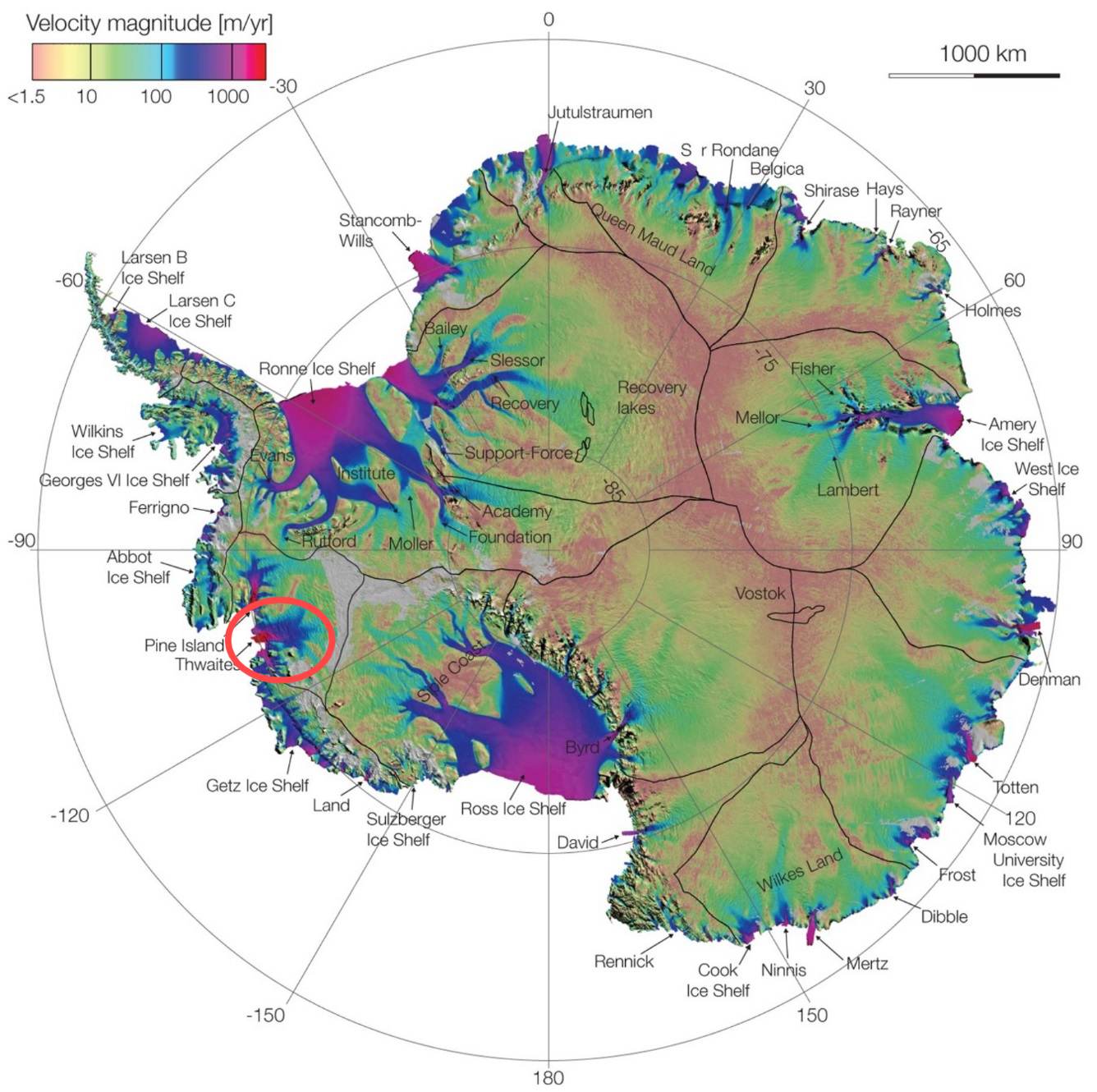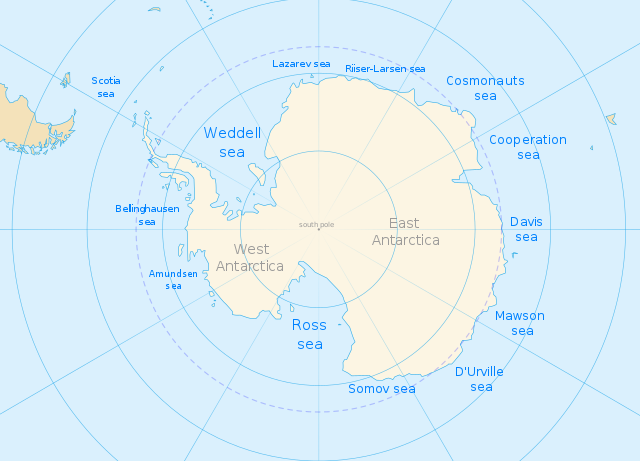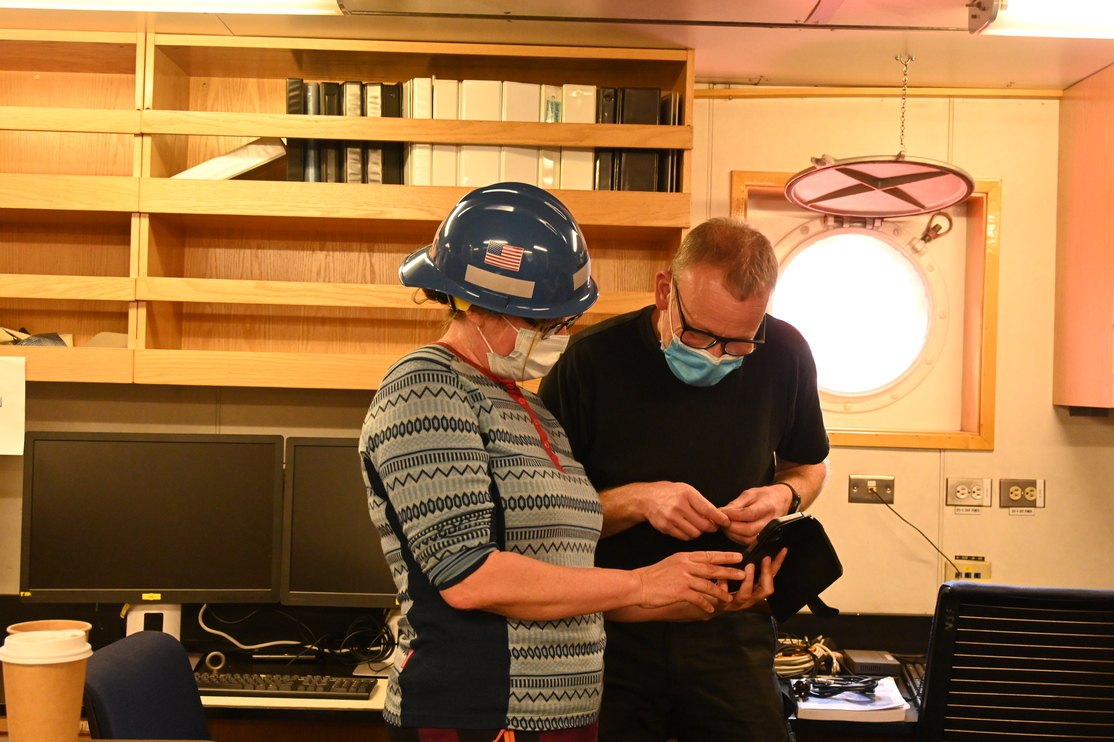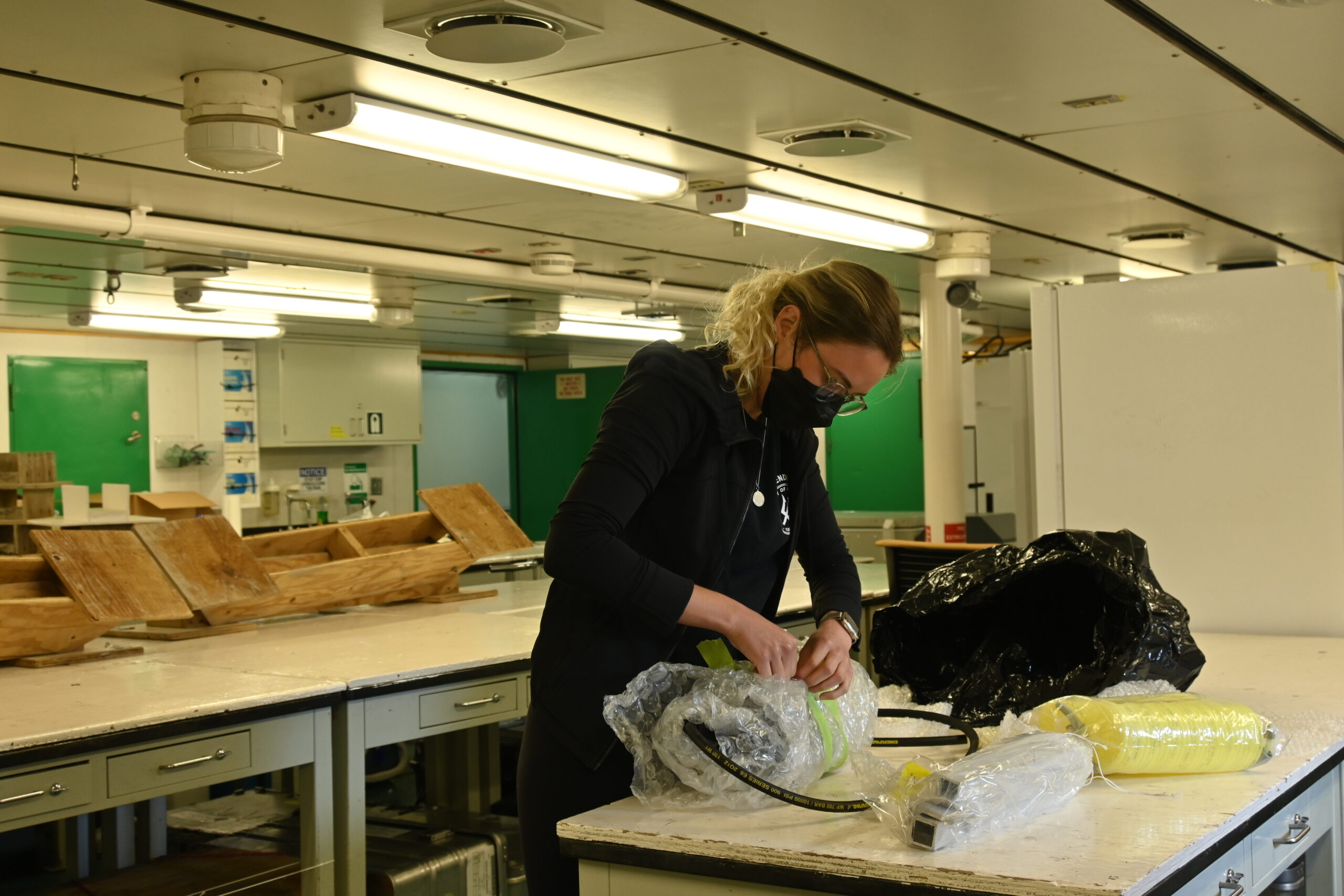Li Ling – Dec 28:
From today and on, our daily 9am morning meetings will consist of brief daily announcements and then a science presentation from one of the scientists onboard! I’d have to admit that I really don’t know much about the projects that are to be conducted on NB Palmer, so it’ll be super exciting to learn more about them! As the scientists share more of their science, I’d like to try to present what I have learned in the blog as well. Hope you’ll enjoy the learning experience with me 🙂
There are three projects heading to the Thwaites Glacier on the NBP this year, including TARSAN and ARTEMIS, all part of or related to the International Thwaites Glacier Collaboration, or ITGC. Hmm… Apparently fancy acronyms are quite important for science 😂 The first three presentations will be about these projects, and I guess we’ll get these acronyms cleared out along the way.
Today’s kick-off presentation is by Rob Hall from the University of East Anglia, one of the two co-chief scientists onboard. He gave us a short intro to ITGC and TARSAN. So ITGC, or the International Thwaites Glacier Collaboration, is a huge UK/US multi-disciplinary research endeavor that consists of many projects, all committed to study the Thwaites Glacier (highlighted in red below) in West Antarctica. By doing short-term and long-term observations and building better models, the scientists are hoping to better understand the Thwaites region, peak into its past and predict its future.

Source: Rignot et al., 2011 Science, with red circle highlighted by Rob
TARSAN, or Thwaites Amundsen Regional Survey And Network, is part of the short-term observation projects. It aims to provide ice, ocean and atmospheric observations that are tied together.
With these integrated data, the scientists will be able to form a better understanding of how and why the glaciers are melting. Many “toys” will be used to collect these data, like seagliders, AUVs (autonomous underwater vehicles, RAN is one of then :)), etc. The variety of instruments also means that TARSAN has the most amount of participants in this cruise, there are 20 of us in total! I might try to introduce each one of us as we get into the detailed project presentations later on, but as of now, you can find short intros on the Twitter account @ueaglider and the Instagram account @thwaitesglaciercollaboration.
Oh and in case you wonder where the Amundsen sea is (I did for a really long time since my beloved map savior – GoogleMap, doesn’t seem to know…), it’s just the part of the ocean outside Thwaites. Here is an image of the seas around Antarctica from Wikipedia:

Source: Wikipedia
At this point you might be wondering (I certainly did), why is there an international collaboration just for such a “small” region (relative to the vast Antarctica continent). It turns out that the Thwaites glacier contributes 4% of global sea level per year. If the entire glacier melts away, the global sea level will rise 65 cm!
For more updates on projects onboard the NB Palmer cruise 2022, check out the following social media accounts:
– Twitter: ITGC @GlacierThwaites; THOR @GlacierOffshore; ARTEMIS @ARTEMISonICE; gliders for TARSAN @ueaglider; Sea Mammal Research Unit at University of St Andrews @_SMRU_; National Science Foundation @NSF
– Instagram: ITGC @thwaitesglaciercollaboration; National Science Foundation @NSfgov; ARTEMIS @artemisonice
Update: 20211228 Cargo!
First week onboard NB Palmer! As covid precautions, we’ll still be wearing masks during the first 7 days indoors, with scheduled meal times and gym times. I’ve been making exaggerated facial expressions for friendly greetings… Really look forward to being able to take off the masks, which will be next year 😂!
A lot of cargo has arrived today, including our “10 pallets of non-dangerous goods”! Well… The global logistic crisis has made shipping difficult for everyone, and these pallets were actually a trimmed version of our 20 foot container that had to be disassembled in Germany and air freighted to Punta Arenas… So all the dangerous goods, i.e. anything with lithium batteries in, got sent back to Gothenburg.
The arrival of cargo means that people started to have much setting up to do! Oh and with the permissions from the other participants, I’ll be adding photos with more people in 🙂

Anna and Anders checking where the 40 foot container with RAN in is currently at

Laura unpacking stuffs for sampling noble gases